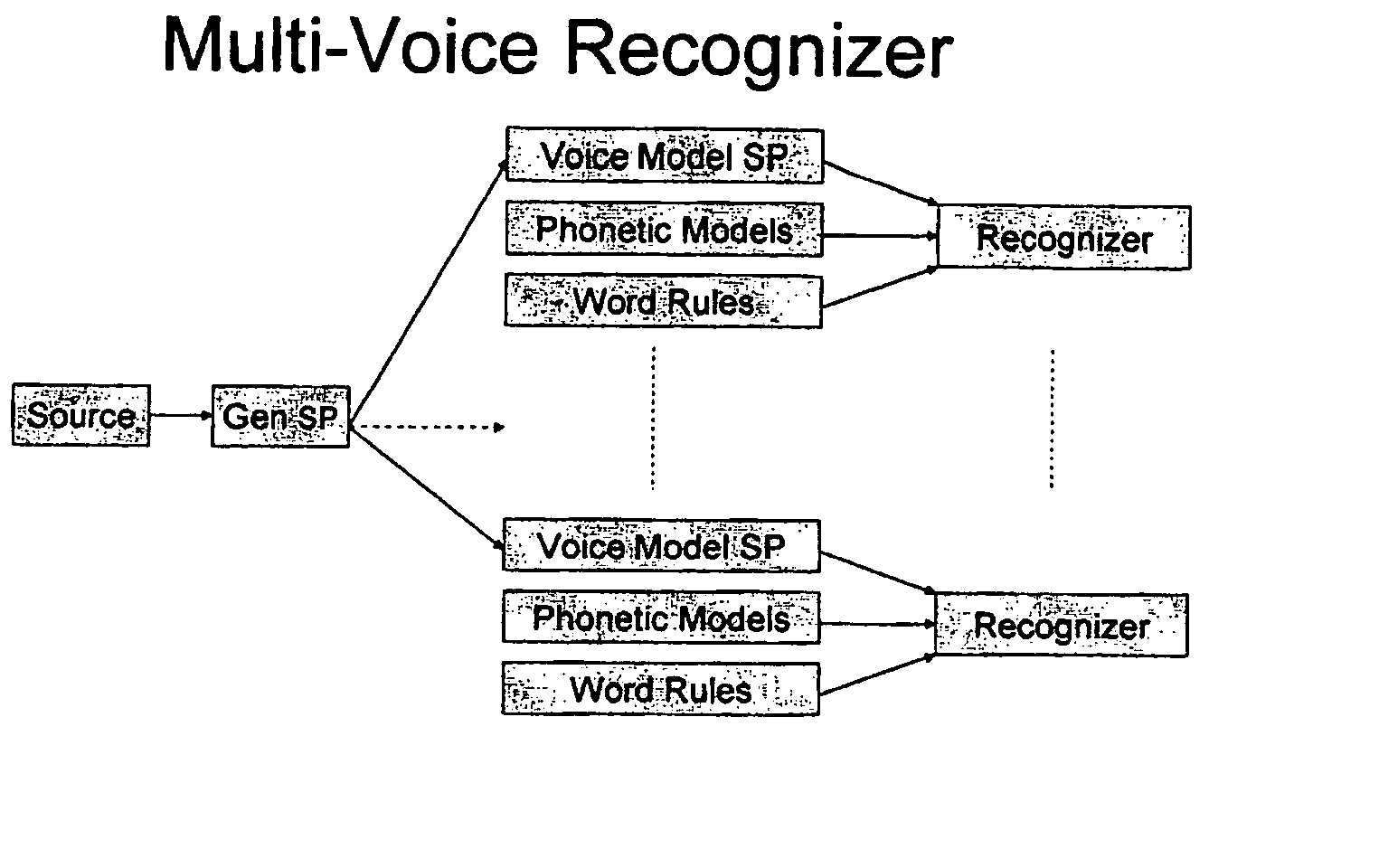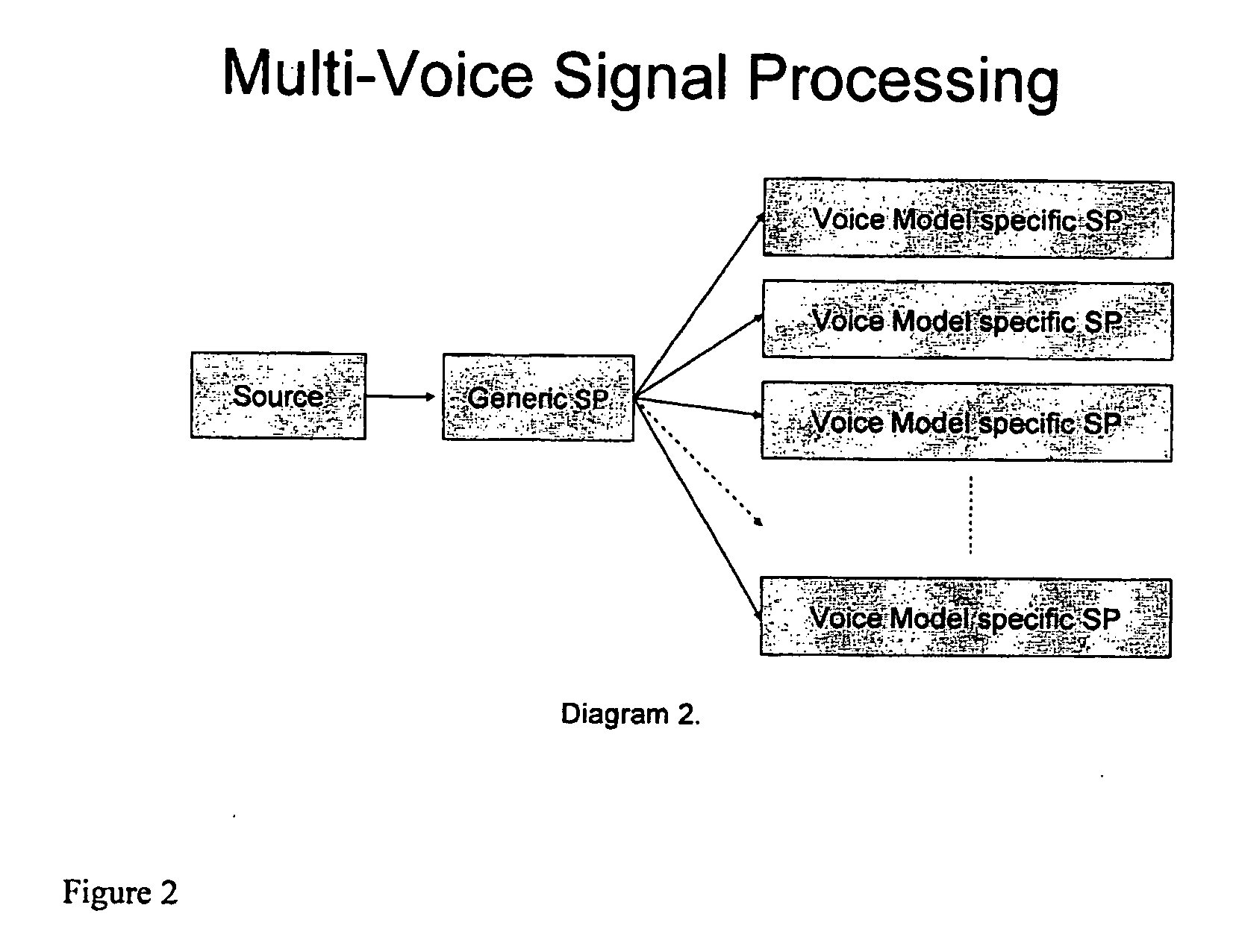Multi-voice speech recognition
- Summary
- Abstract
- Description
- Claims
- Application Information
AI Technical Summary
Benefits of technology
Problems solved by technology
Method used
Image
Examples
Embodiment Construction
[0010]FIG. 1 is a schematic illustration of a conventional speech recognition system.
[0011] Usually in speech recognition, there is a source of speech data (typically a person sitting in front of a microphone). The speech data is digitized and signal processing is done. The raw speech data is digitized to make a vector of numbers characterizing a time window of sound. The recognition engine uses 1) the stream of these vectors of sound data, 2) acoustic phonetic models, e.g. Hidden-Markov-Models (HMM), of speech units such as phones (consistent with the signal processing), and 3) word production rules (a list of the things that may be spoken).
[0012] The recognizer starts the recognition process as soon as the person begins speaking. Using the word production rules, it has a list of all the first words that might be spoken. It starts with a pool of hypotheses that correspond to these start words. As data comes in, the speech recognizer scores these words, by comparing the sounds tha...
PUM
 Login to View More
Login to View More Abstract
Description
Claims
Application Information
 Login to View More
Login to View More - R&D
- Intellectual Property
- Life Sciences
- Materials
- Tech Scout
- Unparalleled Data Quality
- Higher Quality Content
- 60% Fewer Hallucinations
Browse by: Latest US Patents, China's latest patents, Technical Efficacy Thesaurus, Application Domain, Technology Topic, Popular Technical Reports.
© 2025 PatSnap. All rights reserved.Legal|Privacy policy|Modern Slavery Act Transparency Statement|Sitemap|About US| Contact US: help@patsnap.com



